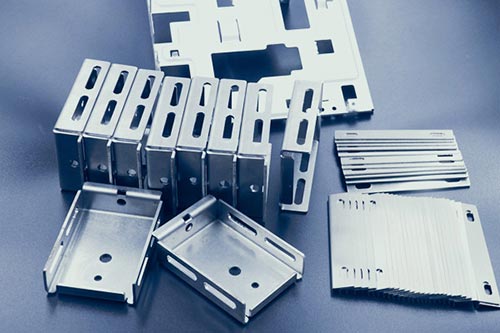How is sheet metal fabricated?
Views: 278 Update date: Jul 11,2024
Sheet metal fabrication is a process that involves the creation of metal structures through various techniques. Here’s an overview of the main steps involved in sheet metal fabrication:1. Design and Engineering
CAD Modeling: The process starts with a detailed design using CAD (Computer-Aided Design) software. This model serves as a blueprint for the fabrication process.Prototyping: A prototype may be created to test the design before full-scale production.
2. Cutting
Shearing: A straight-line cutting process using a shear machine.Laser Cutting: Uses a high-powered laser to cut precise shapes and designs in the metal.
Plasma Cutting: Uses a plasma torch to cut through metal.
Waterjet Cutting: Uses a high-pressure stream of water mixed with abrasive materials to cut through metal.

3. Forming
Bending: The metal is bent to the desired shape using press brakes or other bending machines.Rolling: The metal is passed through rollers to create curves or cylindrical shapes.
Stamping: Uses a die to shape the metal by pressing it into a mold.
4. Joining
Welding: Joining two or more pieces of metal using high heat to melt and fuse them together.Riveting: Joining pieces of metal using rivets.
Fastening: Using screws, bolts, and other fasteners to join metal parts.
5. Finishing
Grinding and Polishing: Smoothing the surface of the metal to achieve the desired finish.Painting and Coating: Applying paint or other coatings to protect the metal from corrosion and improve its appearance.
Anodizing: An electrochemical process that enhances the metal’s corrosion resistance and durability.
6. Assembly
Final Assembly: The fabricated parts are assembled to create the final product.Inspection: Quality control checks are performed to ensure the product meets specifications.
7. Quality Control
Testing: Various tests (e.g., stress tests, load tests) are conducted to ensure the product's integrity and performance.Inspection: Detailed inspections are carried out to check for any defects or inconsistencies.
Common Materials Used
Steel: Durable and strong, often used in construction and industrial applications.Aluminum: Lightweight and resistant to corrosion, ideal for automotive and aerospace industries.
Copper: Excellent conductivity, used in electrical applications.
Brass: Corrosion-resistant and aesthetically pleasing, used in decorative applications.
Applications
Construction: Beams, frames, and supports.Automotive: Car bodies, engine components.
Aerospace: Aircraft panels, structural components.
Consumer Goods: Appliances, furniture, and electronics.
Sheet metal fabrication is a versatile and essential process in manufacturing, enabling the creation of a wide range of products and structures.



